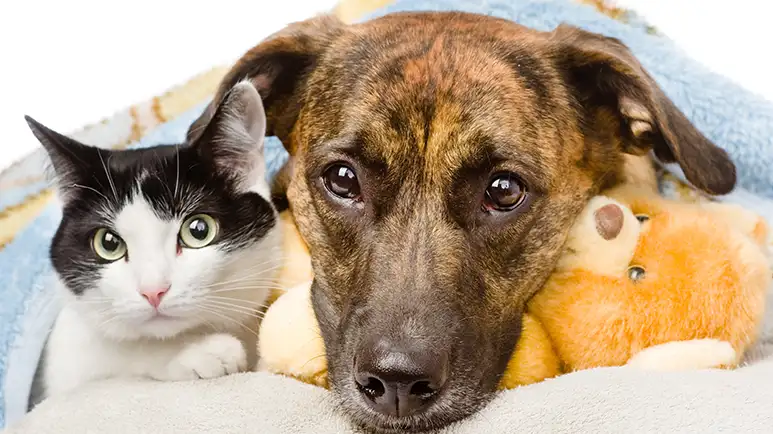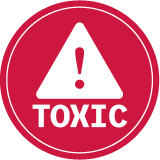Tummy Troubles? Here’s How to Help Your Sweet Pup or Kitty Feel Better Fast
If your furry friend is dealing with vomiting or an upset stomach, it is up to you to help them out. Learn how to spot the signs, soothe their tummies naturally, and know when it is time to call your veterinarian.

STORY AT-A-GLANCE
- Vomiting and regurgitation are not the same. One is forceful and stems from the stomach or intestinal tract, the other is passive and often related to esophageal issues
- From eating spoiled food to parasites to stress, many things can upset your pet's stomach. Knowing the trigger can help you choose the safest path to recovery
- If your pet vomits repeatedly, cannot keep water down, or seems weak or in pain, these are red flags that require immediate veterinary attention
- Gentle fasting, hydration, and natural soothers like ginger tea or slippery elm can ease nausea and help your pet's gut heal without harsh medications
- After vomiting stops, offer bland meals in small portions. Foods like boiled chicken, rice, or pumpkin can help to restore digestion. Start slowly and monitor closely
Vomiting is one of those things no pet parent ever wants to see. It is stressful, messy, and heartbreaking to watch your furry friend feeling sick and not knowing how to help. One minute your dog or cat seems perfectly fine, and the next, they are gagging, heaving, and looking miserable.
If you have ever been there, you are not alone — and the good news is that many causes of vomiting are treatable, manageable, and often not as scary as they seem.
Understanding Vomiting in Pets — What Is Really Going On?
Vomiting is not a disease in and of itself. It is a symptom; your pet's body is trying to tell you something is wrong. Whether it is a minor dietary mistake or a more serious internal issue, vomiting is your pet's way of getting your attention.
Before your pet vomits, you might notice certain warning signs, like lip licking or excessive drooling, frequent swallowing, turning away from food, and retching.1 Your pet may also seem restless, hide, or whine and pace around your home. These are signs that your pet is feeling queasy and recognizing them early can help you to step in and prevent more serious issues.
Once your pet does vomit, however, one of the first things you should do is examine the vomitus. The color, texture, contents, and timing can offer clues. For example:2
- Yellow foam indicates the presence of bile and often happens when your pet vomits on an empty stomach
- White foam can often result from a buildup of saliva and stomach acid in the stomach or from intestinal distress
- Partially digested food can suggest regurgitation, fast eating, a problem with stomach emptying, or a problem with digestion
- Bloody vomit (bright red or coffee-ground) can be a sign of internal irritation or damage
- Foreign material (paper products, a partially eaten toy, or medications, for instance) in the vomitus can indicate that your pet has gotten into something they should not have, or more often that your pet is eating grass to help soothe their upset stomach
While it is not always pretty to inspect, these clues can help you determine how urgent the problem is.
Vomiting Versus Regurgitation — Know the Difference
Pet parents often confuse vomiting with regurgitation, but they are very different. Vomiting is forceful and includes abdominal contractions. Your pet will gag, retch, and hunch their body as their abdomen contracts. True vomiting comes from the stomach or intestines and usually follows signs of nausea.
On the other hand, regurgitation is passive. Food or fluid simply spills out of the mouth with little warning. It can indicate that the food never made it to the stomach, such as with esophageal issues like megaesophagus or esophagitis, or that the contents of the stomach are refluxing backwards passively and abnormally.
Knowing how to distinguish between these two is important, as knowing the difference can help your veterinarian understand the cause of illness more quickly.
Top Reasons Why Your Dog or Cat Vomits
There are many reasons pets throw up, and some are more serious than others. The most common causes include:3
- Dietary indiscretion ("garbage gut") — Eating spoiled food, trash, or non-food items
- Food allergies or intolerances, or even a change in the type of food they eat
- Hairballs (especially in cats) — this is exacerbated by dry food diets
- Parasites like intestinal worms, giardia, or coccidia
- Infections (like parvovirus, especially in puppies)
- Toxins or poisons
- Pancreatitis
- Liver or kidney problems
- Gastrointestinal obstructions (swallowing bones or small toys, for example)
- Motion sickness
- Stress or anxiety
- Tumors in or around the gastrointestinal tract
While some tummy troubles can go away on their own and can be handled at home, there are situations where you need a veterinarian right away. For example, if your pet vomits more than two to three times within a few hours, cannot keep water down, becomes lethargic or weak, or if there are other signs of illness, seek veterinary care immediately.
Give Your Pet's Stomach a Break
If your pet's vomiting is mild or occasional, one of the first things you should do is to allow their digestive system to rest. Do this with your veterinarian's guidance as food withholding times can vary for the situation and may not be appropriate for your pet, especially if your pet is a puppy, a kitten, a diabetic, or a senior pet. Generally, food withholding times are recommended to be anywhere from 2 hours to 12 hours depending on what your pet needs. Withhold the food and see if the vomiting subsides. Be sure to always provide clean drinking water, however, offered in small sips.4
Once vomiting has subsided, talk to your veterinarian about introducing gentle remedies to calm and heal the digestive tract. Some of the top options include aloe juice, slippery elm bark, marshmallow root, and chamomile or ginger tea (make sure it is cooled before giving to your pet). These remedies can help soothe your pet's GI tract, reduce irritation, and help calm your pet's stomach. Supplements like L-glutamine or deglycyrrhizinated licorice (DGL) can also be considered.5 Talk to your veterinarian proactively about supplements to keep on hand and the recommended usage and dosing for your pet; this way, you are prepared in advance.
Vomiting causes fluid loss, so gentle hydration is essential. As mentioned, your pet should always have access to fresh, clean water. Additionally, consider giving your pet homemade bone broth and plain coconut water to help replenish their lost nutrients. You can also freeze these into cubes for easy single servings. This is a great way for picky pets to stay hydrated even when they will not drink plain water.
Reintroduce Food Slowly and Carefully
Once you notice that your pet has not vomited for the fasting period, you can begin feeding again. Start with bland, easy-to-digest meals, consisting of foods like boiled chicken or turkey (no skin or fat), plain white rice or pureed pumpkin, poached white fish, and cooked sweet potato or butternut squash.6
Start with small portions, and wait for an hour or two between servings. If no vomiting occurs, increase the portions slowly, over one to two days. If the vomiting recurs, it could be a sign your pet may has a deeper imbalance. You might need to consider changing your pet's diet or adding probiotics and digestive enzymes to help ease their digestive troubles; talk to your veterinarian about these possibilities. Keeping the gut healthy means fewer flare-ups, less discomfort, and a happier, healthier pet overall.7
Stay Calm and Be Prepared
Vomiting can be alarming, but with a calm, thoughtful approach, you can help your pet feel better fast. By understanding the difference between minor tummy upsets and serious red flags, you will know when to treat your pet at home and when to call the veterinarian. Simple steps like pausing food, offering gentle hydration, and using natural remedies can make a big difference in your pet's recovery.
Every pet is different, and occasional vomiting can be their way of signaling a need for rest or a dietary reset. With the right care and attention, most pets bounce back quickly — and with your growing knowledge, you will be ready to support them every step of the way.










